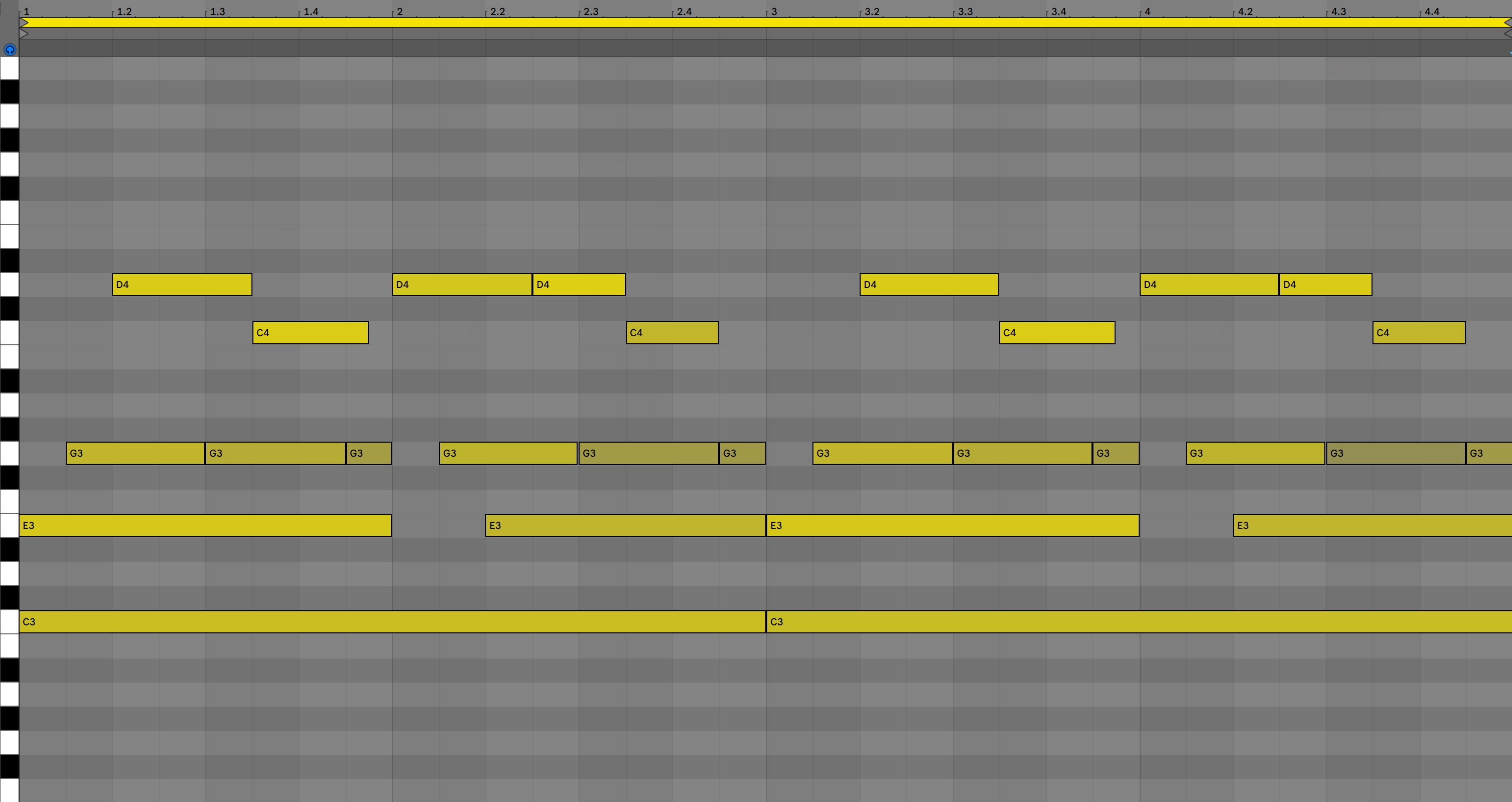Contents
5. Analyzing Chords
I explained how to actualize chords as a real instance. From here, in reverse, check some points on analyzing chords.
Chord Tones vs Non-Chord Tones
Just a moment ago I said a chord can be played with “some lag”, which is called a broken chord. But it’s problematic…How much lag do you see as tolerance?
Here’s a simple melody line; C–D–E–F–E–D–C with C chord accompaniment. Isn’t it possible to see this C–D–E–F as a broken chord?
Yeah it might be so but generally we don’t interpret a melody in this way. D and F are ignored, cut off and we conclude it’s just a C chord.
D and F here is regarded as embellishments, like “branches” or “leaves” versus the “trunks”, the chord. Those tones not included in the constituent of a chord are called Non-Chord Tones.
In this case, followings are the reason to see them as embellishments.
- The accompaniment part plays only C–E–G, neither D nor F.
- D and F is inserted between C,E,G. It looks like they’re just filling the gap between the tones.
In this regard, C–E–G is seen as the “trunk” of the chord while D and F are almost extra. Of-course in terms of melody D and F is equally important but on analyzing chords we daringly ignore them.
Analyzing a song means interpreting a song. There’s no fixed rule and the result may vary according to the purpose of analysis.
Purpose and Resolution
Resolution of analysis (how much detailed information you keep within your scope) depends on your purpose.
The guitar plays 4 tones, C–E–G–D. In this case it is unclear whether this D is included as a chord tone or not. Then, in the first place, the reason you analyze this song comes into the picture.
If you’re planning to ask someone to play this song keeping its sound as much as possible, then you should keep D as data. But if you’re gonna re-arrange this song and this play is just what a guitarist did with his preference, then D could be dropped off.
Simplifying Bass Lines
Bass lines are also simplified on analysis and how much information you cut off depends, again, on the purpose and situations.
This is a “walking bass” line I showed a while ago. If you follow the rule “declare bass notes with slash when the bass plays notes other than root”, it’s endless! So we ignore most of the notes and simply return a verdict DmGCAm.
Truncating Parts
In actual music, there are so many cases where various instruments play their own phrases at the same time.
In this song a bass, sax, electric piano and organ are played along with drums. It’s not practical to sum up all the notes there. In this case the analyzing process will be like this: See the bass as the guideline of chord progression. The sax is playing a very complex phrase so just ignore it. Pick up some common tones between E.P. and organ as chord tones.
The resolution of analysis is really analogous to the “resolution” of photos in your computer. You decide it according to how distinctly you want to capture the world you see.
Songs Not Based on Chords
The idea that chord progression is the “trunk” of music structure is prevailing in both Classics and jazz. It is true of other genres using guitars like rock or Country.
But in other genres like EDM, hip-hop or local traditional music, it is very common that music is not based on the concept of chord.
If you anyhow analyze chord progression of such songs, Just tracking the bass notes and assuming that prime chords are played unless you find some notes outside the key……will be what you can do at best.
Remember that the chord theory is just one of the various perspectives on music. Not all music is under the system of chord theory!
6. The Nature of Theory
You may be worried that by doing this music gets simplified, loosing its true depths? Yes, it does. Music theory simplifies music.
This is the nature of theory. Economics simplifies human. Grammars simplify languages. With such abstraction you gain valuable insights into the target of study.
So feel free to cut off information, but at the same time don’t forget that the actual music is always deeper than what you can see through the glasses of theory!
Summary
- The vertical placement of chord tones is called Voicings.
- In principle, the bass part is responsible for declaring the Rt of chords.
- “Slash” is used to indicate the bass playing notes other than Rt.
- When analyzing chord progressions of a song, you have to cut off some notes to simplify music.

